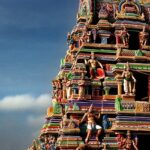China’s Mogao Caves are a remarkable network of caves that are sculpted into the cliffs located in the Daquan River. This eye-catching spot consists of 45,000 sq. mt of murals and more than 2000 painted figures. This makes it one of the massive assemblages of Buddhist art worldwide. In 1987, the caves were acknowledged as a UNESCO World Heritage Site. They are viewed as historical crossroads where religion and trade have flourished immensely. The caves contain incredibly elaborate sculptures and artwork which convey centuries of cultural fusion, artistry, and commitment.
Quick Details About Mogao Caves
Mogao Caves Address: Dun Huang Shi, Jiu Quan Shi, Gan Su Sheng, China
Mogao Caves Timings: 8 AM – 5:30 PM (Everyday)
Mogao Caves Ticket Price: CNY 258 / ₹3,100 (April – November), CNY 160 / ₹1,920 (December – March)
Best Time To Visit: May – October (Summer to Autumn)
Nearest Airport: Dunhuang International Airport
Nearest Railway Station: Dunhuang Railway Station
About Mogao Caves
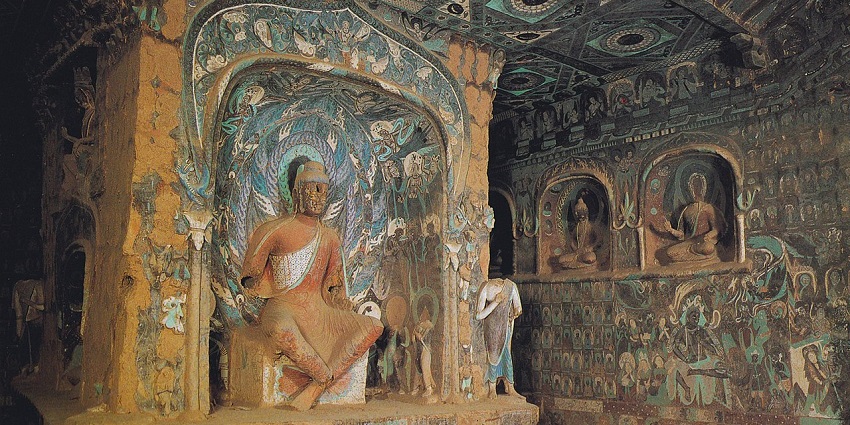
Photo: Ismoon / Wikimedia Commons
The Mogao Caves is a place that blends human creativity with time. Crowned as the “Thousand Buddha Grottoes,” this is a group of remarkable caverns situated near Dunhuang. While visiting these caves, you will encounter more than 500 caves. Each of these caves are carved into the sandstone and then adorned with outstanding murals and statues. The artwork that you witness inside these caves mirror the influences of India, the Tang Dynasty, and Central Asia. The Mogao Caves of China consist of the exceptional Dunhuang art style that perfectly mixes with the customs of the Han Chinese. This art style also perfectly mixes the components of Tibet, Indian, Turkic, and Gandhara cultures.
Suggested Read: Best Places To Visit In Beijing
How To Reach
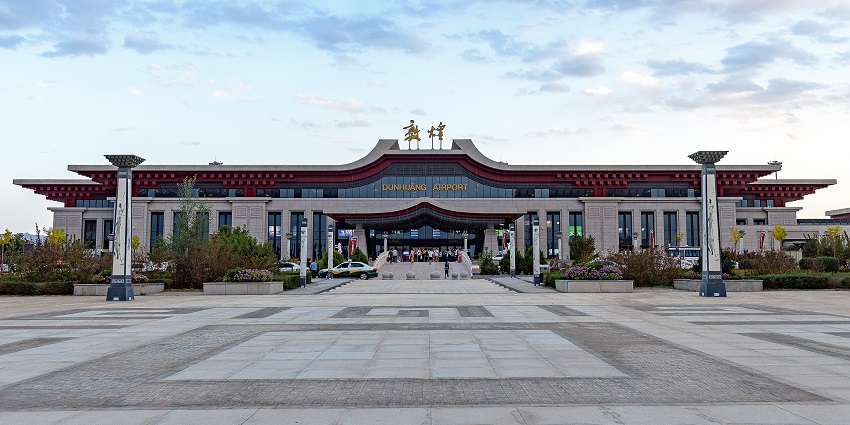
Photo: N509FZ / Wikimedia Commons
Paying a visit to the legendary Mogao Caves will let you witness some extraordinary Buddhist art. Here is how you can get to this place:
By Air: Dunhuang Mogao International Airport is the nearest airport to these caves, as it is 25 km away. From the airport, just take the airport shuttles or taxi and in just 30 minutes to reach the site.
By Rail: The closest railway station is Dunhuang Railway Station, which is 12 km away. You can take a regular train to reach this station, but high-speed trains arrive at the Liuyuan South Station, which is roughly 130 km away. From any station, take a taxi or bus to reach these caves.
By Road: You can get to Dunhuang via highways, such as G30. Once you reach the city, take a local cab or bus, and you reach the caves in 20 minutes to 30 minutes.
Things To Do
Besides witnessing the Buddhist culture, visiting this site will let you indulge in several activities, elevating your experiences:
1. Admire The Legendary Cave Paintings
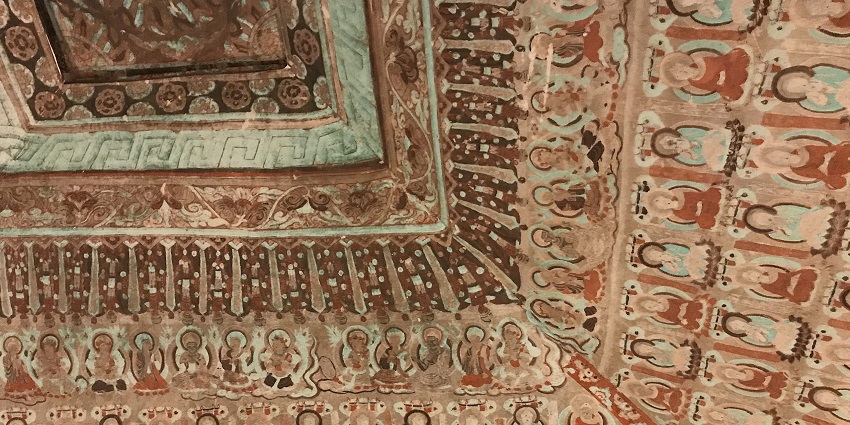
Photo: Hiroooooo / Wikimedia Commons
Entering the Mogao Caves means stepping into the bygone world of Buddhist craftwork. You will find many murals, and each of them has a remarkable saga linked to faith, relations, and even mythology. You will encounter lively depictions of the “Jataka Tales” along with paradises that are carefully painted with gold leaf and mineral dyes. In these artworks, you will get to witness the evolving methods of thousands of years, and it’s guaranteed that it will leave you stunned and speechless. All the murals that you will encounter display a part of history that will make the visit to these remarkable caves memorable.
Suggested Read: Things To Do In Hong Kong In April For Seasonal Thrill
2. Uncover The Hidden Treasures Of The Library Cave
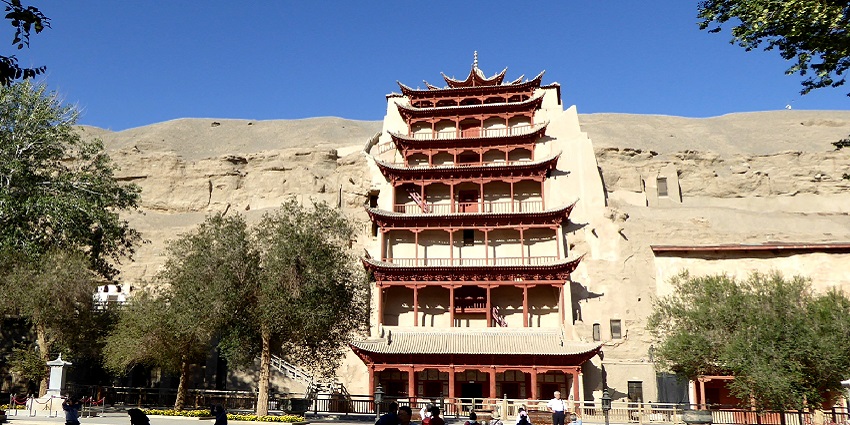
Photo: Hiroki Ogawa / Wikimedia Commons
The “Library Cave,” which is Cave 17, consists of 50,000 artefacts and manuscripts. All these gems were hidden away from the world for many centuries and uncovered from behind a wall and offer insights into archaic religions, cultures, and even languages. Apart from all that, Cave 17 also contains information about explorers like “Aurel Stein,” who discovered this specific treasure. Although many of the items from these caves have been circulated internationally, Cave 17 still carries a mysterious atmosphere.
3. Experience Virtual And Digital Caves
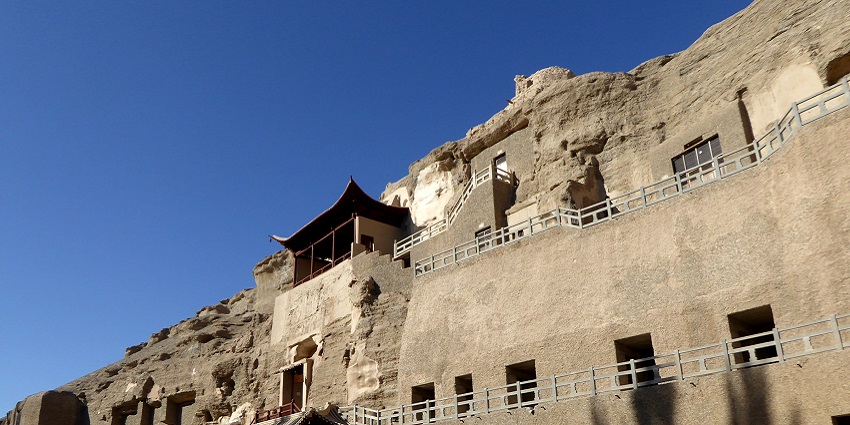
Photo: Hiroki Ogawa / Wikimedia Commons
Due to the presence of modern technology, it has become easier to explore ancient caves. With the digital doppelgangers, it’s possible to recreate all the murals and sculptures inside the Mogao Caves. Through this option, you will get the chance to get a closer view of all the elaborate details and safeguard the delicate area from visitors. This is a highly advanced technology that aids in preserving the actual magnificence of the Mogao Caves. Don’t miss out on taking Mogao Caves pictures while you make the virtual or digital versions of these caves.
Suggested Read: Exploring Labrang Monastery’s History, Rituals, And Nearby Attractions – Your Perfect Guide
4. Check Out the Buddhist Sculptures
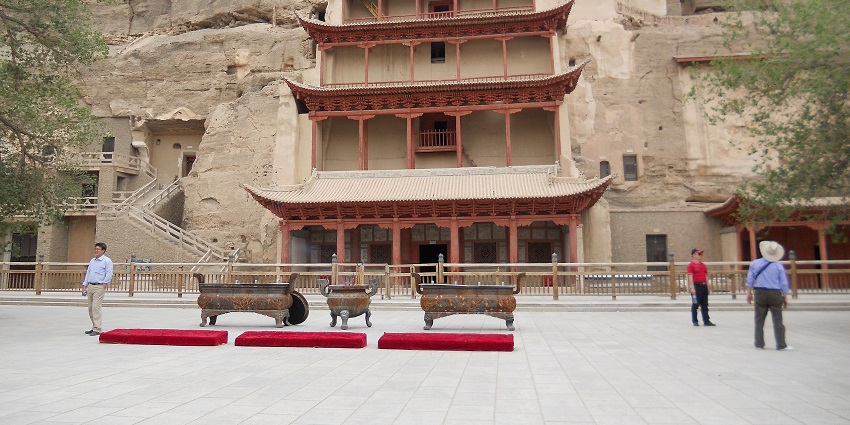
Photo: Randy Rambo / Wikimedia Commons
At Mogao Caves, you will not just find murals but also encounter sculptures that are remarkable and mystical that come in many sizes. From all the majestic Buddhas to the serene “Bodhisattvas,” all of these figurines mirror artistic excellence and spiritual affection. Furthermore, the unique thing about these sculptures is that they are crafted from wood, straw, and plaster, painted with lively dyes, and adorned with gold. When you explore the caves, you will also find relics from the Tang Dynasty that show figurative depth and courtly elegance. This will let you catch a glimpse into the splendour of ancient Chinese craft.
5. Learn About The Preservation Efforts
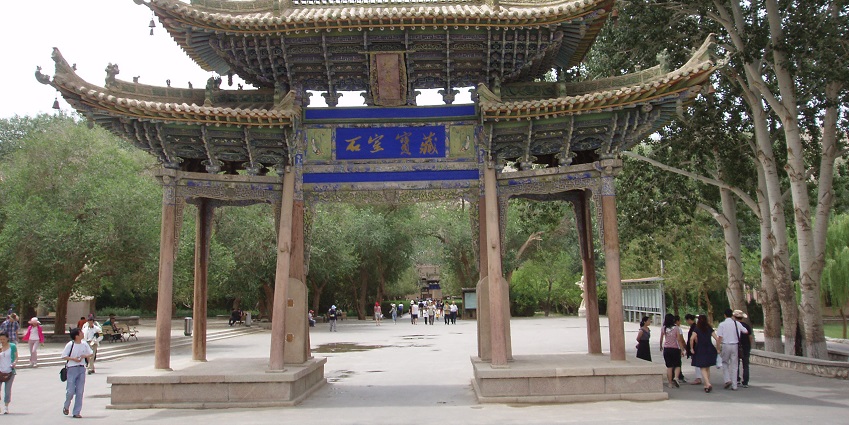
Photo: Fanghong / Wikimedia Commons
It’s vital to respect the actions taken to shield these Caves of the Thousand Buddhas for the coming generation. You will uncover all the difficulties experienced in protecting all these relics from natural dangers, such as humidity and sandstorms. Some great innovative methods, such as structural reinforcement and digital documentation, were used by “The Getty Conservation Institute and Dunhuang Academy.” These methods enabled the academy to conserve the caves. 3D scanning and VR also assisted in duplicating and preserving this spot to make sure that it stays untouched for many years. Getting to witness and understand how these caves are upheld will help you obtain plenty of wisdom.
Suggested Read: The Essential Hong Kong Travel Guide
Places To Visit Near Mogao Caves
Although the Mogao Caves will take you a good amount of time to check out, you must also visit the attractions near these ancient caves:
1. Mingsha Sand Dunes And Crescent Moon Lake
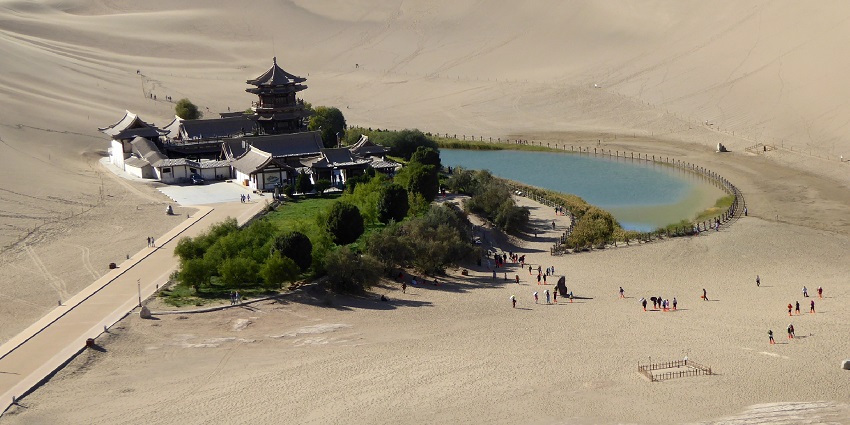
Photo: Hiroki Ogawa / Wikimedia Commons
The Crescent Moon Lake is just 5 kilometres away from the city of Dunhuang. This is a stunning oasis situated in the great Gobi Desert. The Mingsha Sand Dunes wrap this beautiful lake. These dunes are well-known across the globe for making “singing” sounds in the wind. Visiting this spot will offer you a blend of peace and adventure, an ideal place to check out when you visit the Mogao Caves. You can stand right on top of the dunes and look at the remarkable views the place offers.
Distance From Mogao Caves: 30.1 km
Timings: 6:30 AM – 8:30 PM
2. Dunhuang Museum
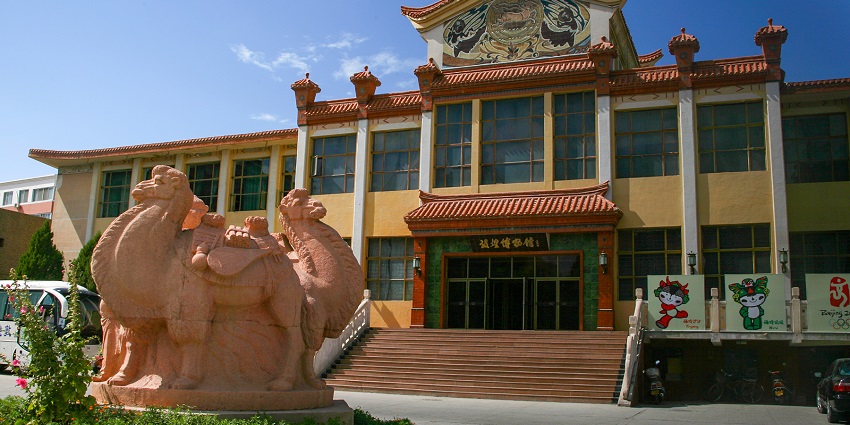
Photo: Windmemories / Wikimedia Commons
The Dunhuang Museum is a sanctuary for all history lovers as it showcases the legacy of the iconic Silk Road. It also houses many pottery, textiles, Buddhist scriptures, and artefacts that were uncovered in the Mogao Caves. Dunhuang Museum also has many models of Dunhuang’s bygone era, as it showcases the region’s commercial and cultural value. It’s an excellent place to acquire information on various relics, figurines, and conduct research. Furthermore, visiting the Dunhuang Museum will also significantly enhance knowledge about this region’s historical and artistic value.
Distance From Mogao Caves: 26.7 km
Timings: 9 AM – 6:30 PM
Suggested Read: Top Things To Do In Hangzhou China
3. Yangguan Pass And Yumen Pass
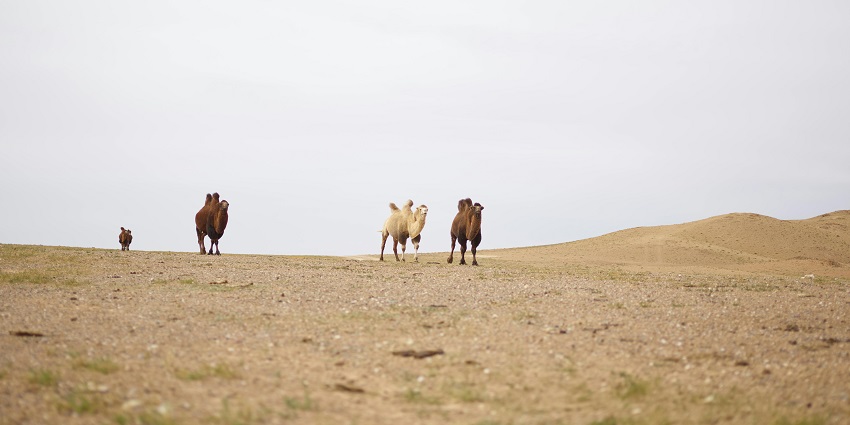
Photo: ArtHouse Studio / Pexels / Image For Representation Only
The Yangguang and Yumen Pass are ancient and crucial gateways of the Silk Road. Yumen Pass, also anointed the “Jade Gate,” was parroted after the jade passed right through this gateway. At this location, you will find carefully maintained walls within a desert geography. On the other hand, The Yangguan Pass is shrouded by grandeur. It also has a small museum and a reconstructed beacon overlook. These two passes will offer you a lot of facts about the archaic trade routes and the position they recreated in linking civilisations.
Distance From Mogao Caves: 90 km
Timings: 24*7
Where To Stay
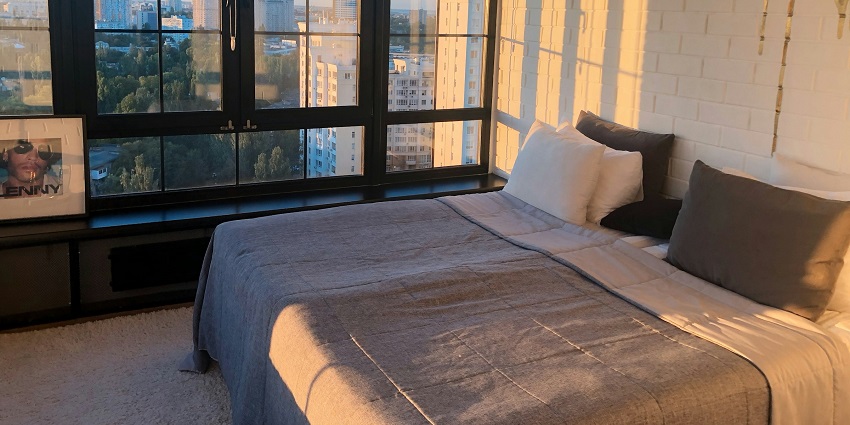
Photo: Olexandr Ignatov / Unsplash / Image For Representation Only
When you plan to stay at Dunhuang City after visiting the Mogao Caves, it is vital to look for a cosy place to spend the night. Some of the popular places are the Grand Sun Hotel, Silk Road Dunhuang Hotel, Dunhuang Sunshine Hotel, The Silk Road Lodge, and Dunhuang International Hotel.
Suggested Read: Experience The Vibrant And Unforgettable Hong Kong Nightlife Adventures
Where To Eat

Photo: Polina Tankilevitch / Pexels
After spending hours exploring and admiring the relics and murals inside these caves, you might feel hungry. Around Dunhuang, you will find countless eateries that serve both international and local food. The most popular ones are Lao Dunhuang Restaurant, Dunhuang Delights, Shazhou Night Market Stalls, Silk Road Restaurant and the Moon Cafe.
Tips For Travellers
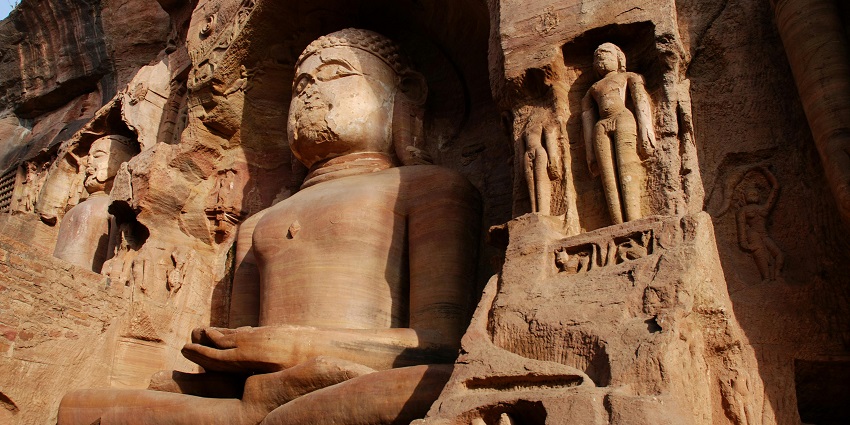
Photo: Tom D’Arby / Pexels / Image For Representation Only
For your safety and optimal exploration of the Mogao Caves, keep the following factors in mind:
- Visitor numbers are capped daily to protect the site, so secure your tickets well in advance.
- You can only explore select caves with a guide, who will provide insights into the art and history.
- The desert climate can be extreme. Wear layers and comfortable shoes, and also bring water.
- Photography is often denied inside the caves to protect the artwork and respect these rules.
- Begin with the Mogao Caves Digital Exhibition Center for an immersive introduction to the site’s history and treasures.
- Make sure to check the Mogao Caves timings before you plan on visiting the caves, as some sections stay open for a certain time.
Suggested Read: Places To Visit In Shanghai
The Mogao Caves are a trip to human passion, artistry, and the past. Whether you admire the murals, explore statues, or experience digital doppelgangers, this holy site pledges a trip through period, civilization, and belief. This will leave you uplifted and linked to a lasting heritage. These caves in China render an amazing spot for history buffs. For a smooth trip with no hassles, plan your vacay with TripXL.
Cover Photo: Manta paopao / Pexels


 WhatsApp
WhatsApp
 Twitter
Twitter

